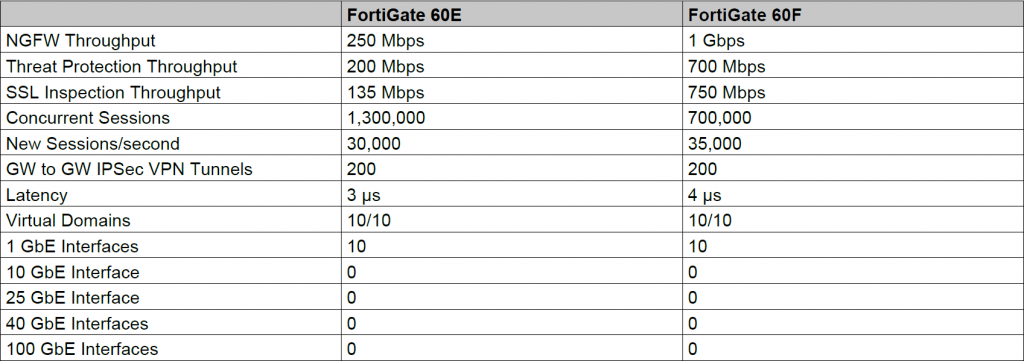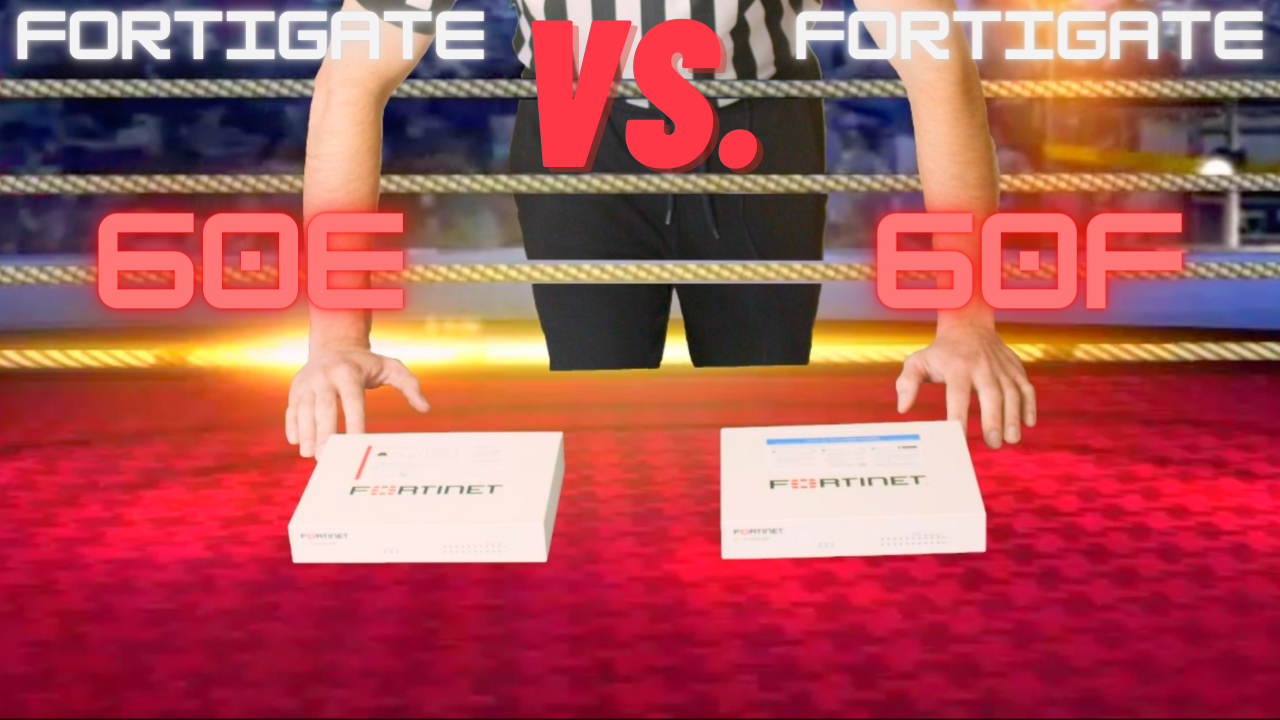As many of you may know, Fortinet launched the new F series of their firewalls recently. When manufacturers release a new series, it can often be confusing for customers. Do you need to upgrade? What are the new features? Is the new model better? We decided to clear up some of the confusion and share some of the differences between the FortiGate 60E and 60F. We will look at speed, chips, SD-WAN, and of course, security. First, let’s look at the speed comparisons.
Speed
The FortiGate 60E came out in 2016 and has been the reigning champ of speed ever since. With a firewall throughput of 3Gbps, a threat protection throughput of 200 Mbps, and a NGFW throughput of 250 Mbps, which made it an ideal firewall for offices with around 25 users. But the 60F is crushing those numbers with its blazing fast speeds. The FortiGate 60F has a firewall throughput of 10 Gbps, a threat protection throughput of 700 Mbps, and an NGFW throughput of 1 Gbps. You can view the chart below for some more specs, but the clear winner here is the 60F.

Chips
One of things Fortinet has always prided themselves on is their chip sets. Instead of outsourcing their chip production to 3rd parties like a lot of other firewall companies do, Fortinet develops their own. Because of this, both firewalls have some impressive architecture. The 60E includes a SOC3 chip. This was Fortinet’s 3rd generation of a system on a chip. The SOC 3 allowed for a CPU, content processor, and network processor all to live on the same chip. Because all of this is happening on one chip, the 60E gave higher performance, less latency, and used less power than previous models. The FortiGate 60F took it a step further with Fortinet’s newest chip the ASIC SOC4. The ASIC SOC4 includes the same features as the SOC3, but it can also deliver application identification and steering for over 5000 known applications. This makes the 60F ideal for any organization looking to shift to SD-WAN. Because of this, the 60F is the winner of this round as well.
SD-WAN
More and more companies are making the shift to SD-WAN every day. In fact, Gartner predicts that by 2024, 60% of enterprises will be using SD-WAN. And why not? It is cheaper than an MPLS connection, and easier to set up and configure. The 60E does have SD-WAN capabilities. And with the 6.2 release of FortiOS, Fortinet made it even easier to configure. The 60E includes dynamic path selection over any wan transport to provide a better application experience. However, the FortiGate 60F is designed for SD-WAN. As mentioned before, the ASIC SOC4 chip can identify and steer traffic from over 5000 different applications. The 60F has application aware routing with built-in SD-WAN capabilities to achieve consistent application performance and the best user experience, so the clear winner in this round is the FortiGate 60F.
Security
Fortinet has always been focused on security. Both the 60E and the 60F have very similar security features. They both protect against malware, exploits, and malicious websites. Both models also have the ability to inspect both encrypted and non-encrypted traffic. Both models can protect against known and emerging threats by using FortiGuard labs security service. And both are part of the Fortinet Security Fabric. So, this round is a draw.
And The Winner Is…
After 4 rounds the new champion is the FortiGate 60F. With its new ASIC SOC4 chip, and secure SD-WAN advancements, the 60F is a great upgrade from the FortiGate 60E. Now don’t get me wrong. The 60E is still a solid firewall. It has great security features, decent speed, and simplified SD-WAN setup. But if you are in the market to upgrade your FortiGate device or are looking to expanding your secure SD-WAN capabilities You should take a look at the 60F. For more information on the FortiGate 60F, visit corporatearmor.com. Our security experts can help you find the best security solutions to fit your business.

